
ANCIENT ART — Ara Pacis Augustae (“Altar of Augustan Peace”),...
The Ara Pacis Augustae and the Imagery of Abundance in Later Greek and Early Imperial Roman Art. Princeton, N.J. : Princeton University Press. Ceen , Allan , ed. 1984 .

Ara Pacis, el triunfo de Augusto
The Ara Pacis Augustae (Altar of the Augustan Peace), commonly known as the Ara Pacis, is not only a beautiful work of art commemorating a peaceful era, but it also functioned as a propaganda piece for Augustus and his regime.
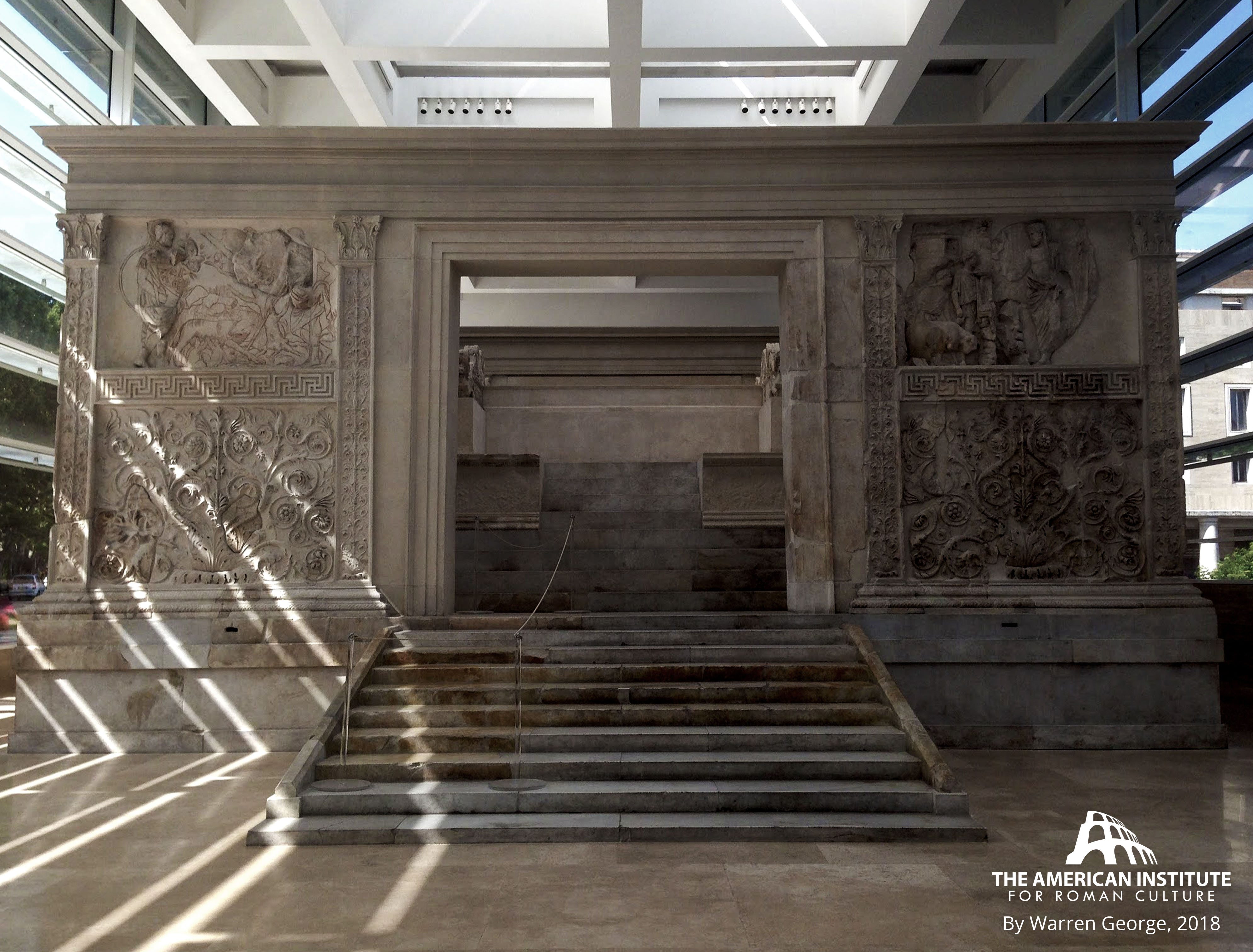
Ancient Rome Live Monuments of Rome Ara Pacis Augustae
Where is Ara Pacis Augustae located? Ara Pacis Augustae is located at Lungotevere de' Mellini 35 in Historical Center, 1.1 miles from the center of Rome. Castel Sant'Angelo is the closest landmark to Ara Pacis Augustae. When is check-in time and check-out time at Ara Pacis Augustae? Check-in time is 2:00 PM and check-out time is 10:00 AM at Ara.
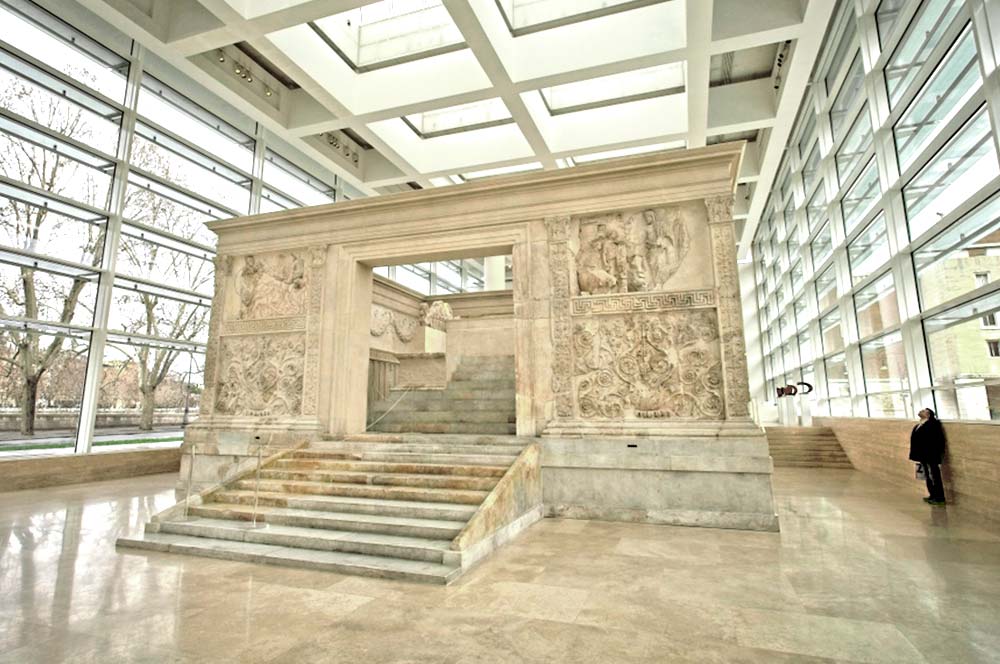
Ara Pacis Augustea The Altar of Peace ArcheoRoma
The Ara Pacis Augustae, or Altar of Augustan Peace, stands as one of the most prominent and richly symbolic artifacts of Ancient Rome. This intricately adorned monument offers an intriguing window into the period of Pax Romana, a time of unprecedented peace and stability ushered in by the rule of Emperor Augustus. Not merely an altar, the Ara Pacis serves as a compelling narrative of Augustus.
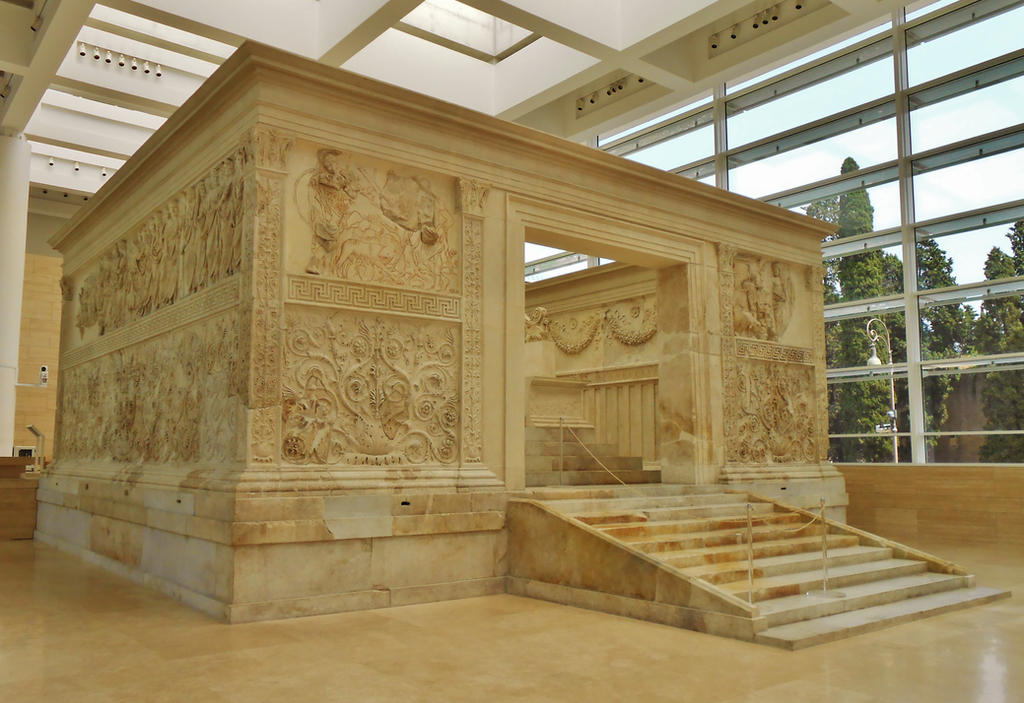
Ara Pacis Augustae GeohistoriaArte
The Ara Pacis (Latin, " Altar of Peace ") is an altar in Rome dedicated to peace. The personification of peace is depicted as the Roman goddess Pax. The Ara Pacis was dedicated on January 30 in 9 BC, the birthday of Augustus his wife Livia. It is also referred to as the Ara Pacis Augustae (" Altar of Augustan Peace ") because it prompted the.
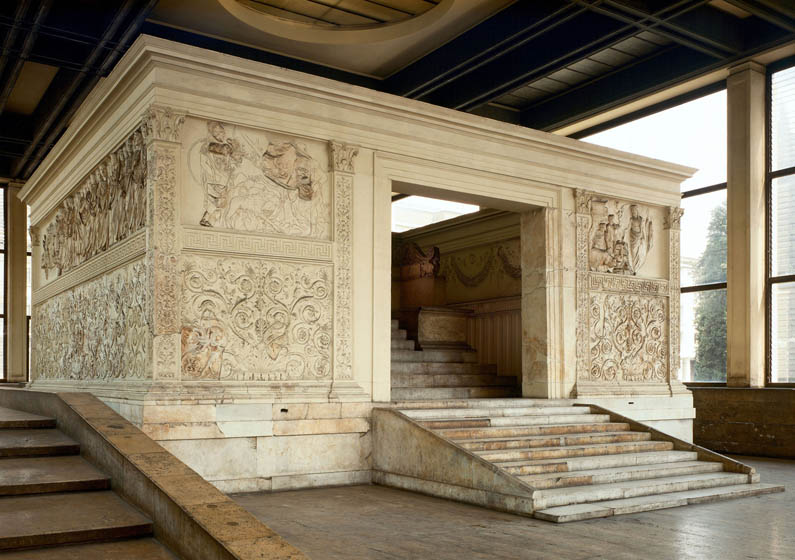
Art Ara Pacis Augustae (Altar of Augustan Peace) Annenberg Learner
World History Encyclopedia. Retrieved from https://www.worldhistory.org/video/195/ara-pacis-augustae-altar-of-augustan-peace-13-9-bc/ Chicago Style Academy, Smarthistory, Art History at Khan. " Ara Pacis Augustae (Altar of Augustan Peace), 13-9 B.C.E. (Rome) ." World History Encyclopedia.

Ara Pacis Augustae. Built in 1st century BC to celebrate the return of Augustus from his
Ara Pacis (Augustae), (Latin: "Augustan Altar of Peace") State monument built by Caesar Augustus in Rome's Campus Martius (13-9 bc) to commemorate his victorious return from Spain and Gaul. It consists of an altar on a podium enclosed by walls.

Ara Pacis Augustae, the "Altar of Augustan Peace", as reassembled Altar, Pax, Colosseum Rome
The Ara Pacis is, at its simplest, an open-air altar for blood sacrifice associated with the Roman state religion. The ritual slaughtering and offering of animals in Roman religion was routine, and such rites usually took place outdoors.

Ara Pacis, Roma, guida completa orari, biglietti, storia, cosa sapere.
The Ara Pacis Augustae or Altar of Peace was built to celebrate the return of Augustus from his campaigns in Spain and Gaul. The marble structure is a masterpiece of Roman sculpture. Built in: 9 a.C. Built by: Senato Romano Location: Lungotevere in Augusta The Ara Pacis is an exciting example of Roman sculpture in the early times.

Ara Pacis Augustae e la teca di Meier • Cosa Vedere a Roma
The Ara Pacis Augustae or Altar of the Augustan Peace in Rome. Built to celebrate the return of Augustus to Rome in 13 BCE following campaigns in Spain and Gaul, it is a masterpiece of Roman sculpture and, in particular, portraiture.
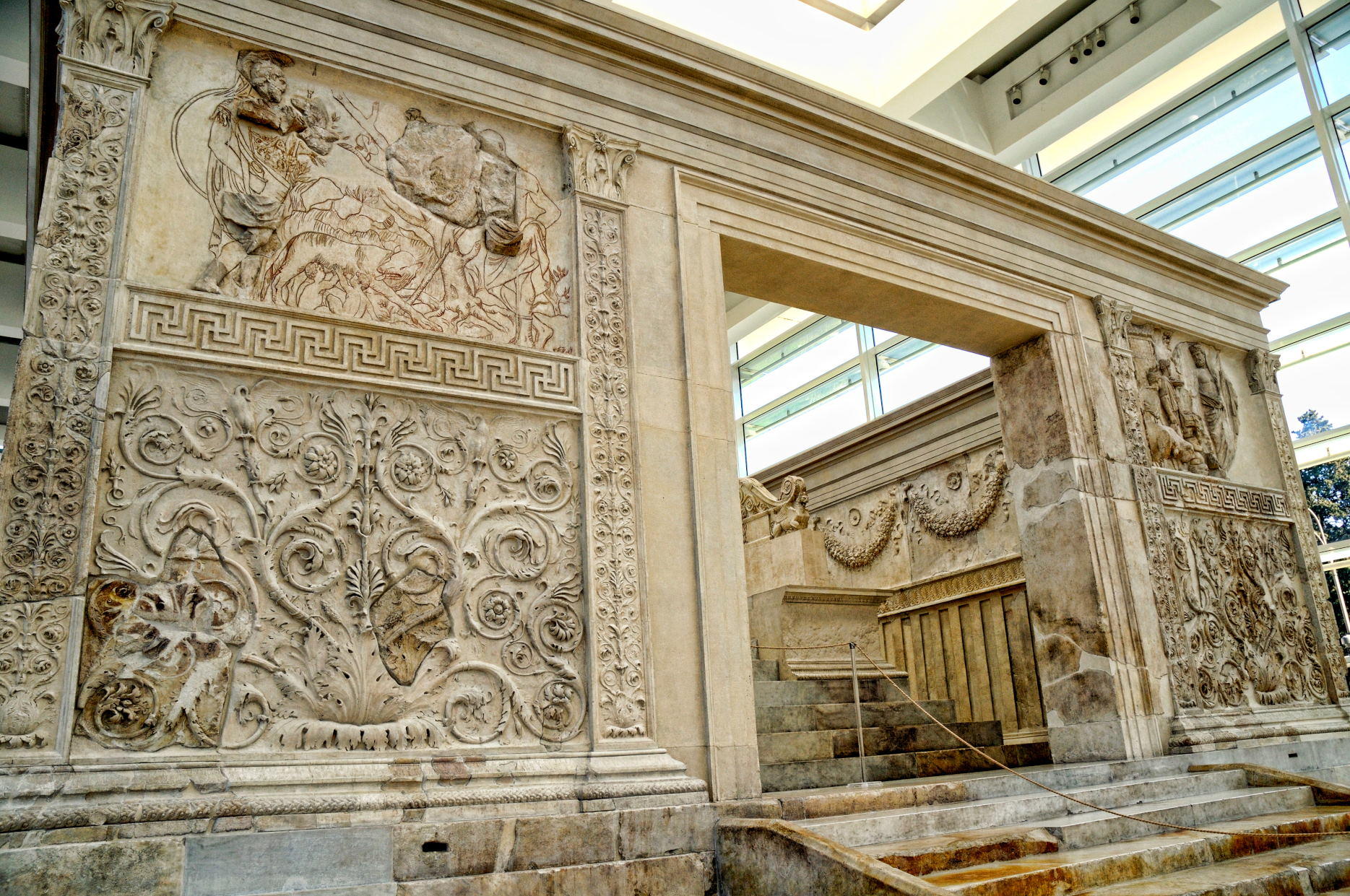
Ara Pacis Colosseum Rome Tickets
The Ara Pacis was commissioned by Emperor Augustus to celebrate the victories in the military campaigns of Spain and Gaul. The altar, begun in 13 BC, was solemnly inaugurated on January 30, 9 BC, on the birthday of his wife Livia Drusilla. Originally the altar had to be entirely painted and completed with gold leaf.
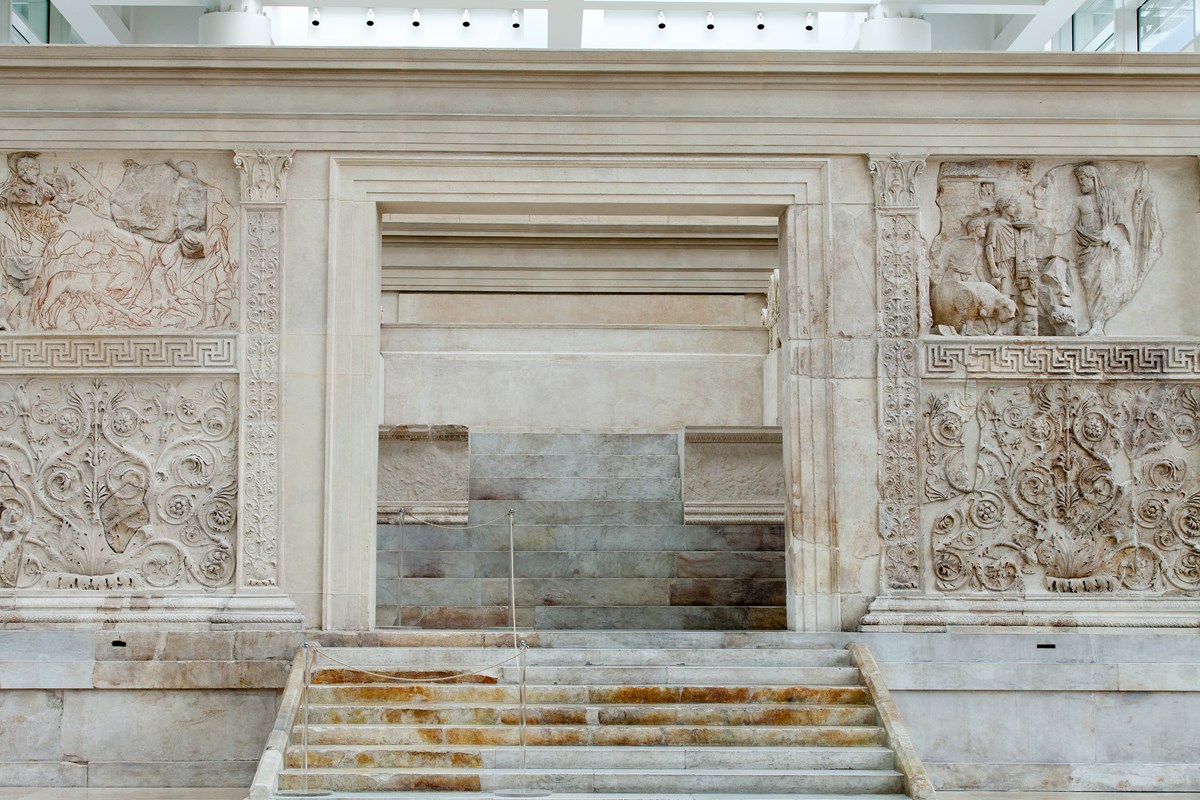
Ara Pacis Augustae, a Roman Altar to Peace
The Ara Pacis Augustae is a complex masterpiece, with elaborate reliefs including more than a hundred figures and voluminous vegetation filled with the details of nature. It is also a much damaged and reconstructed monument, making it important to distinguish original marble portions from later hypothical reconstructions and more recent changes.

The Ara Pacis Augustae (Altar of Augustan Peace)
Sculpted monuments, such as the Ara Pacis Augustae built between 13 and 9 B.C., testify to the high artistic achievements of imperial sculptors under Augustus and a keen awareness of the potency of political symbolism. Religious cults were revived, temples rebuilt, and a number of public ceremonies and customs reinstated.
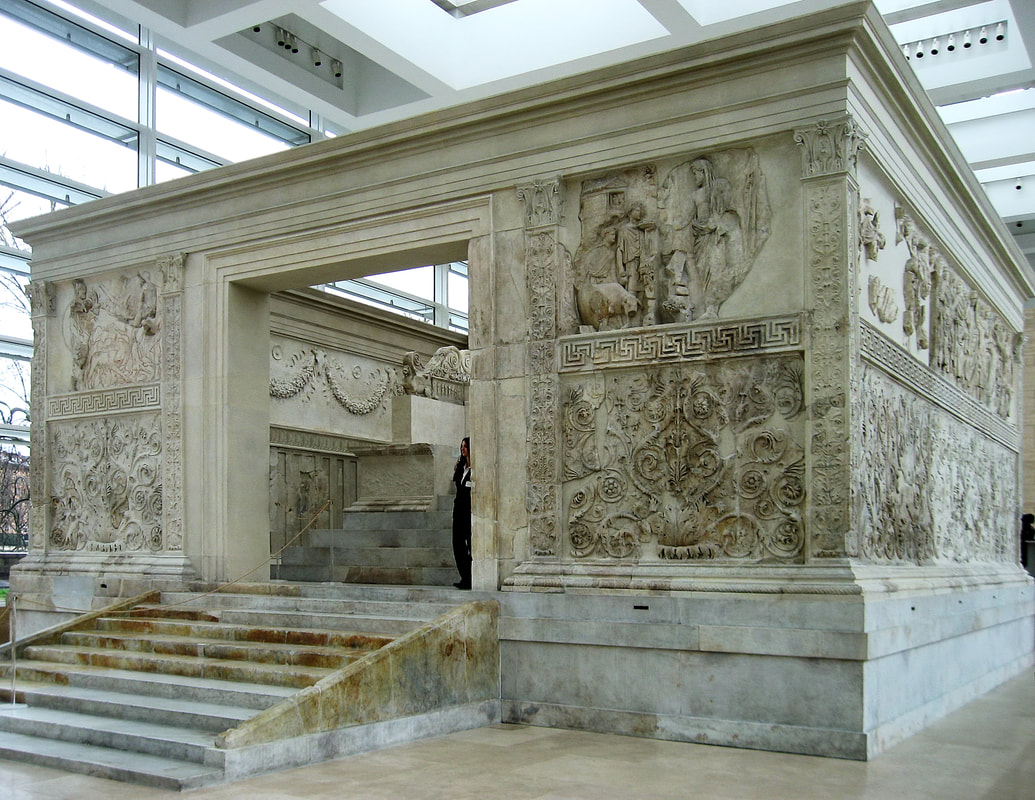
HOCW62 Ara Pacis Augustae ("Altar of Augustan Peace"). Rome, Italy. 139 BCE. EMILY HAUSER
Ara Pacis, shrine consisting of a marble altar in a walled enclosure erected in Rome's Campus Martius (Field of Mars) in honour of the emperor Augustus and dedicated on Jan. 30, 9 bce. The dedication was recorded in Ovid's Fasti as well as by Augustus himself in his "Res Gestae Divi Augusti"
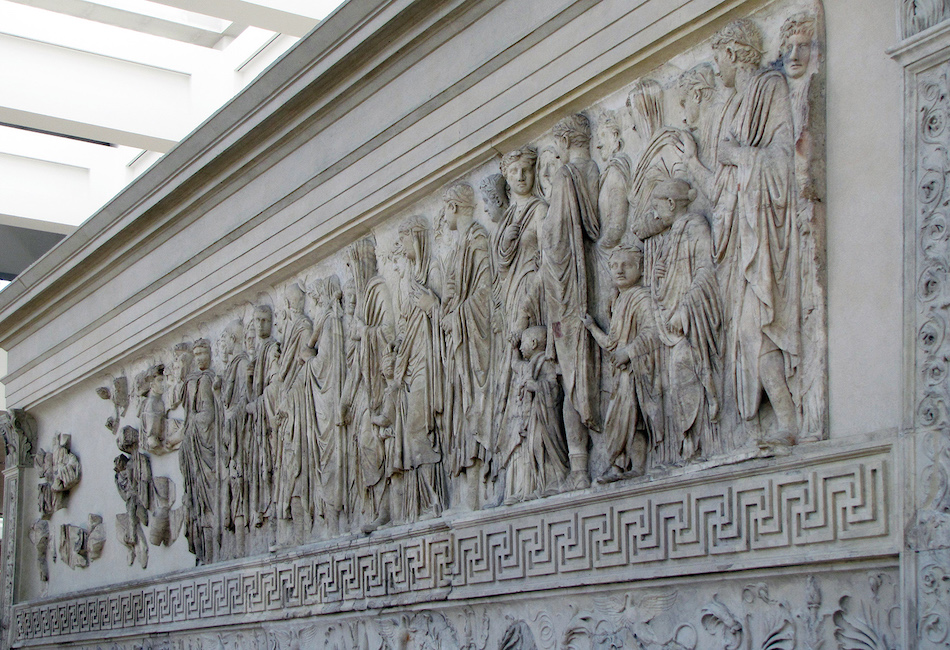
The Ara Pacis Augustae (Altar of Augustan Peace)
The Ara Pacis Augustae, or Altar of Augustan Peace, is an ancient Roman altar erected by the Roman Senate to celebrate Augustus's victorious return from Spain and Gaul. It was constructed between 13 and 9 BC, during a period of political stability and cultural rebirth in Rome known as the Pax Romana.
ROMA, CAPUT MUNDI ARA PACIS AUGUSTAE
The Ara Pacis Augustae or Altar of the Augustan Peace in Rome was built to celebrate the return of Augustus in 13 BCE from his campaigns in Spain and Gaul. The marble structure, which once stood on the Campus Martius, is a masterpiece of Roman sculpture and, in particular, of portraiture.